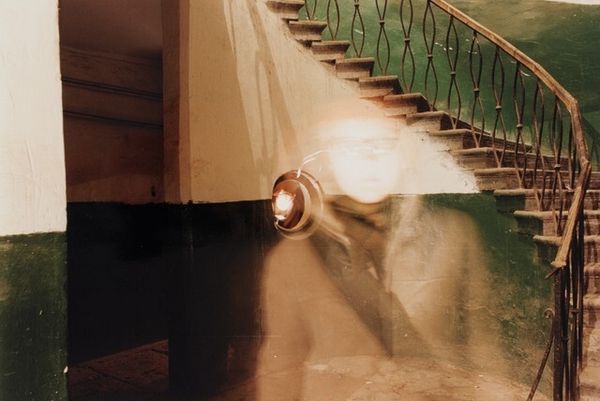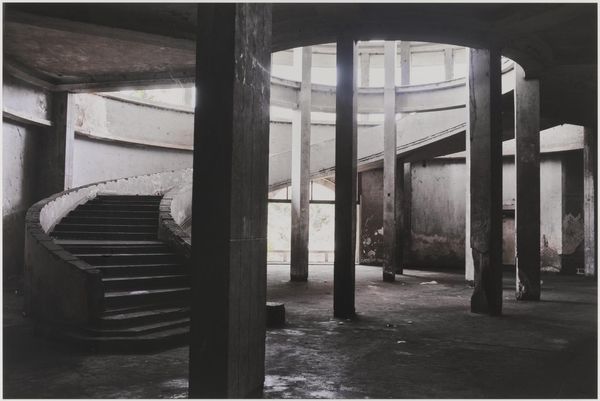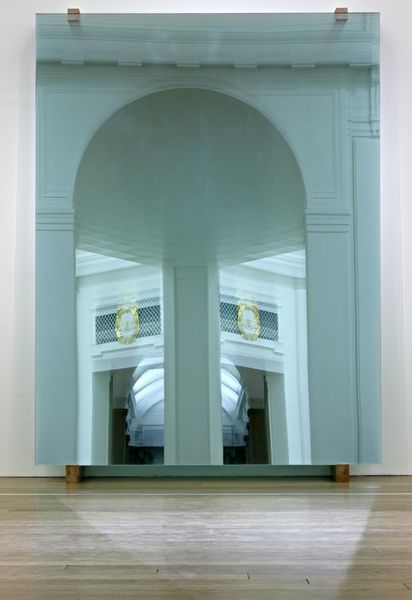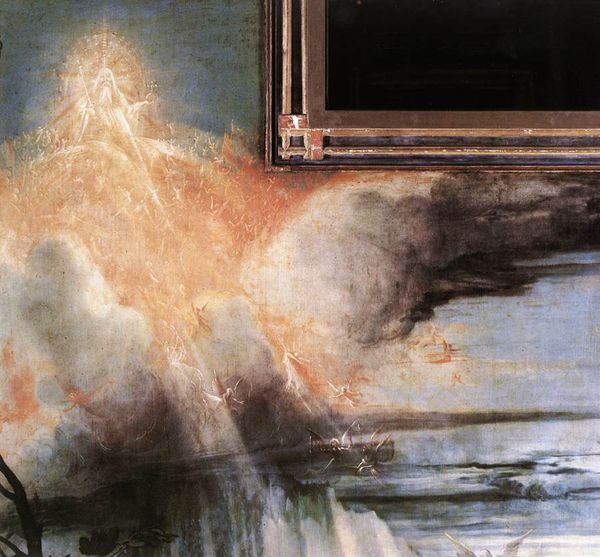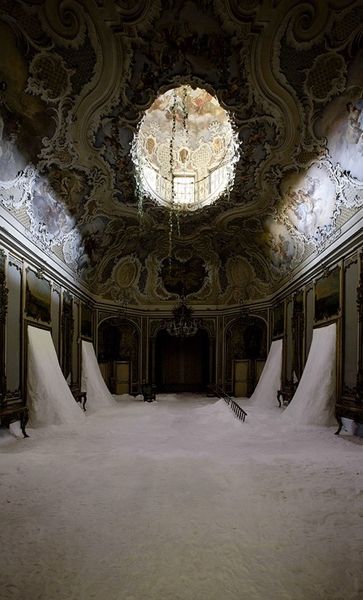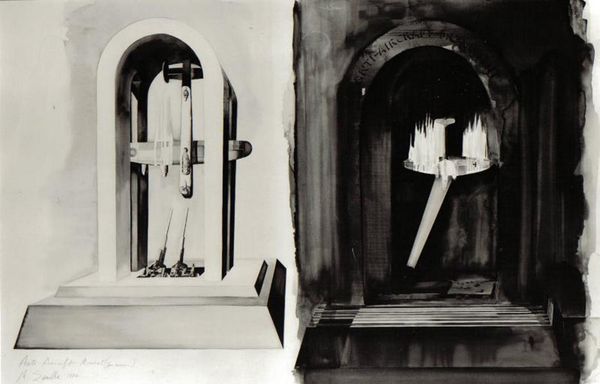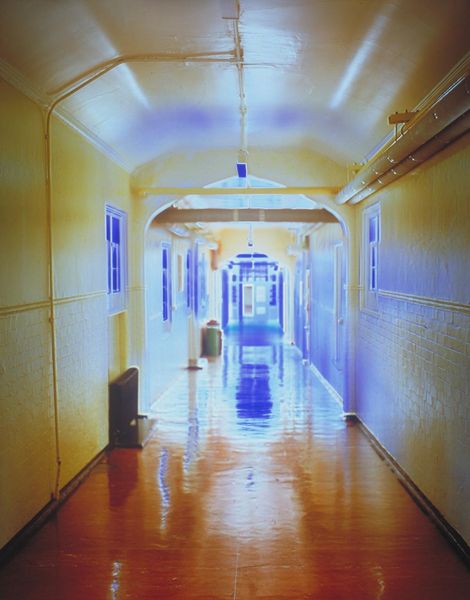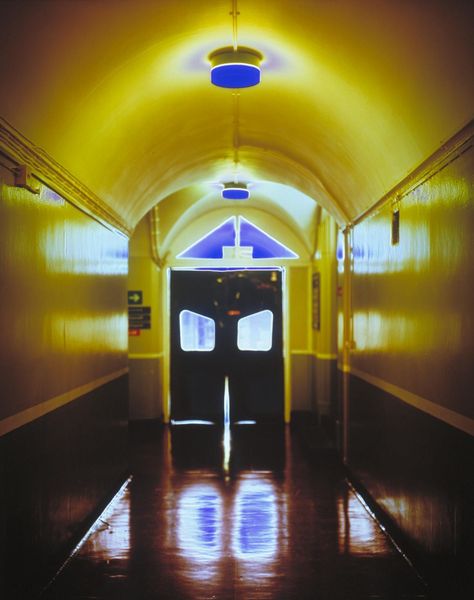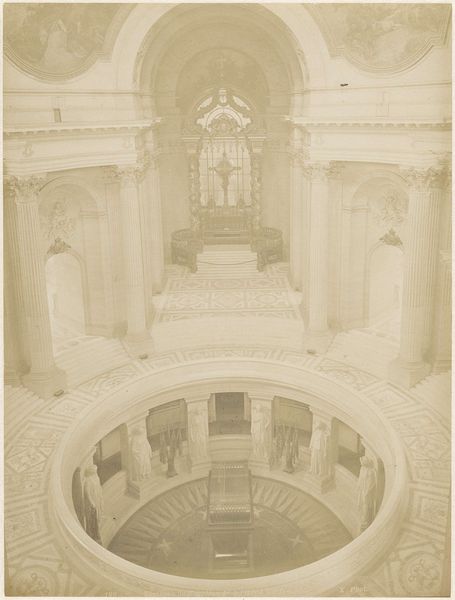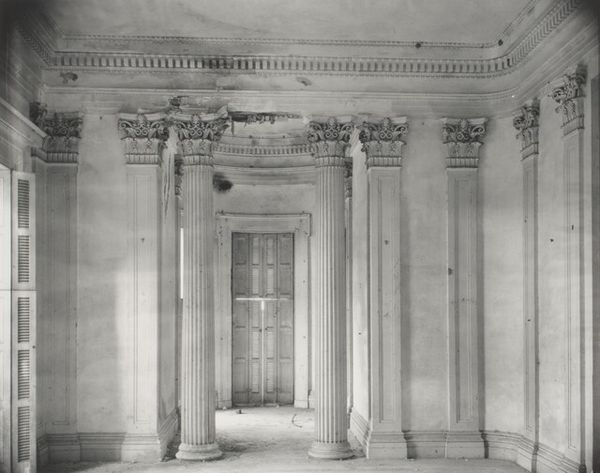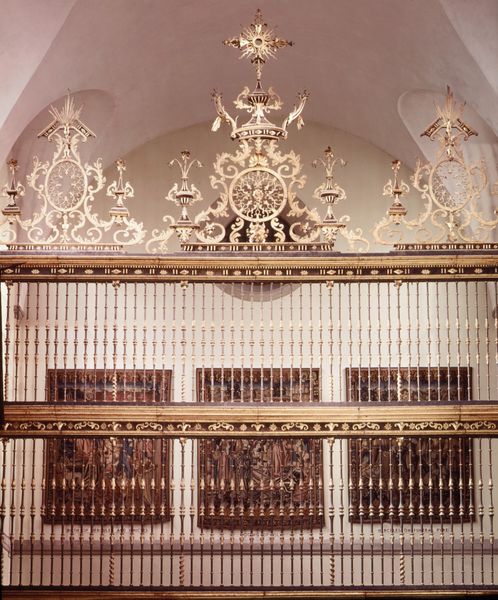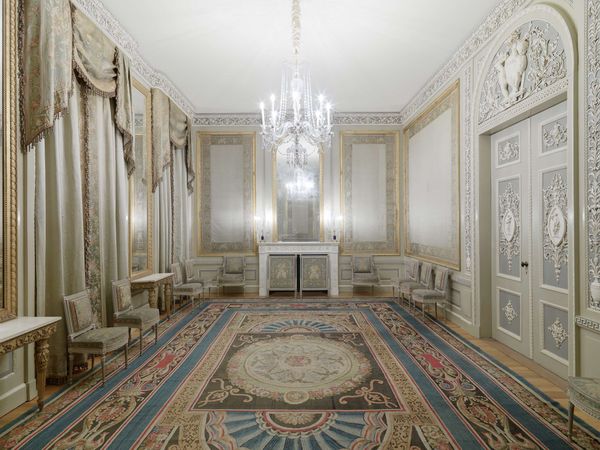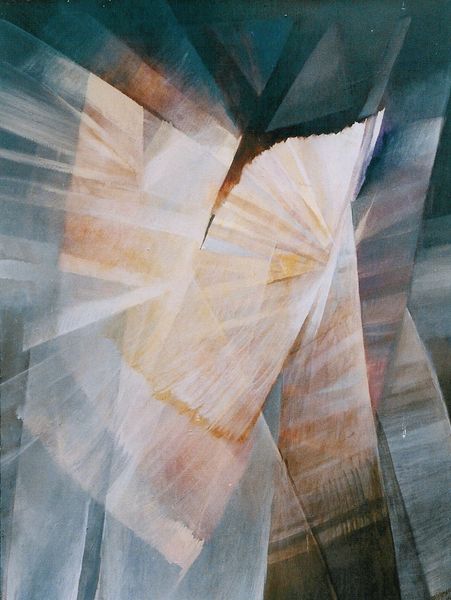
public-art, photography, site-specific, installation-art
#
public art
#
sculpture
#
public-art
#
photography
#
geometric
#
site-specific
#
installation-art
Dimensions: image/sheet: 30.5 × 45 cm (12 × 17 11/16 in.)
Copyright: National Gallery of Art: CC0 1.0
Curator: Dmitry Vilensky’s "Accidents at a Staircase," made in 2001, is quite evocative. What are your initial impressions? Editor: Immediately, I'm struck by the contrasting energies at play here: a sort of dilapidated elegance juxtaposed with these bright, almost violent bursts of light. It’s spectral, hinting at narratives unspoken. Curator: Right, and Vilensky achieves this atmosphere through a very deliberate manipulation of his medium. He combines photography with site-specific installation art. Think about what it means to introduce a performative element into a staged setting, with transient, sparkling trails across what looks like a once-grand, now decaying stairwell. Editor: Absolutely, I agree. It makes me consider whose accidents have historically been overlooked or literally whitewashed in spaces like this. This place certainly speaks to the unequal distribution of labor and access, with class dynamics literally built into its architecture. How do we understand the value of such physical remnants and who dictates the preservation or disposal of them? Curator: These site-specific interventions, particularly his employment of light and shadow, engage in dialogue about what we choose to valorize. He illuminates not just the staircase but the concept of “accidents,” or overlooked events. Editor: Precisely. The layering of artistic choices and decaying textures is palpable. How do those sparks mirror moments of violence that are somehow part of the structural memory here, moments impacting lives along intersecting axes of class, race, and gender? It raises important questions of institutional accountability. Curator: We can extend this examination into material reality: How can art function as both a tool for observation, as in photo documentation, and as a critical intervention? He forces us to confront not just what happened but also to become active agents in making memories that transcend just aesthetic interpretation. Editor: It’s about sparking dialogue, isn’t it? Looking beyond conventional art appreciation and actively re-examining built environments as cultural records laden with untold stories. Curator: Indeed, prompting active participation that pushes our understandings. Editor: Exactly. That engagement with these spaces lets us all be part of crafting new understandings.
Comments
No comments
Be the first to comment and join the conversation on the ultimate creative platform.
